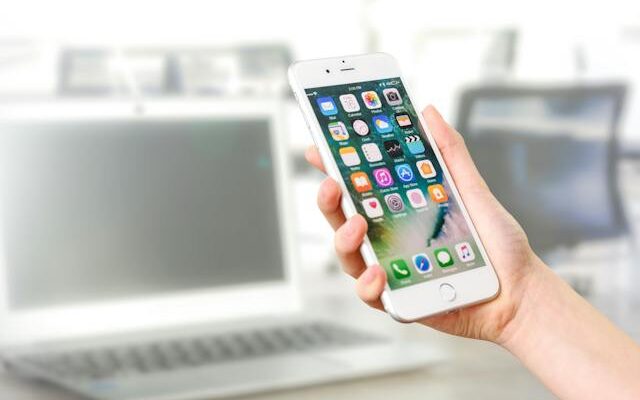The journey of mobile phones, from their humble beginnings as clunky communication devices to their modern-day status as pocket-sized supercomputers, is nothing short of remarkable. Over the decades, these portable devices have evolved at an astonishing pace, reshaping the way we communicate, work, and live. In this article, we will take a deep dive into the evolution of mobile phones, exploring the key milestones that have defined their transformation.
The Early Days: Brick Phones and the Birth of Mobility
The concept of mobile telephony dates back to the mid-20th century, with the introduction of car phones and handheld radios. However, it wasn’t until the late 1970s and early 1980s that the first truly portable cellular phones emerged. These early devices, often referred to as “brick phones” due to their bulky size and weight, represented a major breakthrough in mobile communication.
The Motorola DynaTAC 8000X, released in 1983, is often considered the world’s first commercially available handheld mobile phone. It weighed approximately 2.2 pounds (1 kg) and had a battery life of around 30 minutes of talk time. With a price tag of nearly $4,000, it was a luxury reserved for the few.
Despite their size and cost, brick phones marked the beginning of mobile mobility, allowing users to make calls from virtually anywhere. They set the stage for the rapid advancements that would follow.
The 1990s: Shrinking Sizes and Enhanced Features
The 1990s brought significant changes to the mobile phone landscape. Manufacturers began to focus on reducing the size and weight of devices while incorporating new features. Phones like the Motorola MicroTAC and the Nokia 1011 made mobile communication more accessible to a broader audience.
The Nokia 5110, released in 1998, was a game-changer. It featured a monochrome LCD screen, customizable faceplates, and the game Snake. Nokia’s dominance in the mobile phone market during this period laid the foundation for its future success.
In 1996, Nokia introduced the Nokia Communicator 9000, a precursor to modern smartphones. It featured a full keyboard, a large monochrome display, and basic productivity apps, making it a choice for professionals on the go.
The 2000s: The Rise of Flip Phones and Camera Phones
The early 2000s saw the emergence of flip phones, which added a sense of style and functionality to mobile devices. Phones like the Motorola RAZR and the Samsung SGH-T100 became iconic symbols of the era. These phones featured compact designs, color screens, and improved battery life.
The introduction of camera phones in the early 2000s revolutionized mobile photography. The Sharp J-SH04, released in 2000, was one of the first phones to incorporate a camera, albeit with low-resolution capabilities. Over the years, camera phones evolved rapidly, leading to the proliferation of mobile photography and selfies.
The Smartphone Revolution: A New Era Begins
The turning point in the evolution of mobile phones came with the introduction of smartphones. The term “smartphone” was coined to describe devices that combined traditional phone functions with advanced computing capabilities. One of the early pioneers in this space was the BlackBerry, known for its secure email services.
However, it was the launch of the Apple iPhone in 2007 that truly revolutionized the industry. The iPhone featured a touchscreen interface, a sleek design, and access to the App Store, which allowed users to download a wide range of applications. This marked the beginning of the smartphone era as we know it today.
In response to the iPhone’s success, competitors like Samsung, HTC, and Google entered the market with their own Android-based smartphones, leading to increased innovation and competition. Smartphones became more than just communication devices; they became essential tools for productivity, entertainment, and social connectivity.
The Era of Mobile Computing: Features and Capabilities
As smartphones continued to evolve, their capabilities expanded exponentially. Features such as GPS navigation, high-resolution cameras, and augmented reality (AR) became standard. Mobile operating systems like Android and iOS offered advanced customization and seamless integration with other devices and services.
The introduction of 4G LTE networks in the late 2000s significantly improved data speeds and enabled a wide range of data-intensive applications. Video streaming, online gaming, and cloud-based services became more accessible on mobile devices.
With the release of the iPhone 4 in 2010, Apple introduced the Retina Display, a high-resolution screen that set new standards for display quality. This innovation spurred competition among manufacturers to produce smartphones with stunning visual experiences.
The Current Landscape: Smartphones as Pocket-sized Supercomputers
In 2024, smartphones have reached an astonishing level of sophistication. They are no longer just communication devices; they are pocket-sized supercomputers with a multitude of functions. Here are some key features and capabilities that define modern smartphones:
Processing Power: Today’s smartphones are equipped with multi-core processors, often rivaling the processing power of some laptops. This enables them to handle complex tasks such as AI processing, gaming, and multitasking effortlessly.
High-resolution Displays: 4K displays, OLED technology, and high refresh rates have become standard, providing stunning visuals for gaming, streaming, and productivity.
Advanced Cameras: Multiple-camera setups with high-resolution sensors, optical zoom, and advanced image processing allow for professional-quality photography and videography.
5G Connectivity: The rollout of 5G networks has unlocked even faster data speeds, reduced latency, and expanded possibilities for IoT (Internet of Things) connectivity.
Biometric Security: Facial recognition and fingerprint sensors provide secure and convenient methods for unlocking devices and authorizing payments.
AI and Machine Learning: Smartphones use AI and machine learning algorithms for tasks like image recognition, language translation, and voice assistants, making them more intuitive and capable.
Augmented Reality (AR) and Virtual Reality (VR): AR and VR applications have gained traction, offering immersive experiences for gaming, education, and professional training.
Long-lasting Batteries: Advances in battery technology, coupled with efficient processors, have improved battery life, ensuring that smartphones can handle a full day’s use.
Ecosystem Integration: Smartphones seamlessly connect with other devices and services, allowing users to control smart homes, track fitness, and stay organized.
Conclusion: The Unstoppable Evolution of Mobile Phones
The evolution of mobile phones from brick-sized devices to pocket-sized supercomputers is a testament to human ingenuity and our ever-increasing need for connectivity and convenience. Today’s smartphones are more powerful, versatile, and integrated into our daily lives than ever before.
As technology continues to advance, we can only imagine what the future holds for mobile phones. From folding screens to advanced biometrics, and even the possibility of AR glasses, the journey of mobile phone evolution is far from over. These pocket-sized marvels will continue to shape our world and redefine the way we live, work, and play.
In the end, one thing is certain: the evolution of mobile phones is a journey that will keep us captivated and amazed for years to come.











Comments